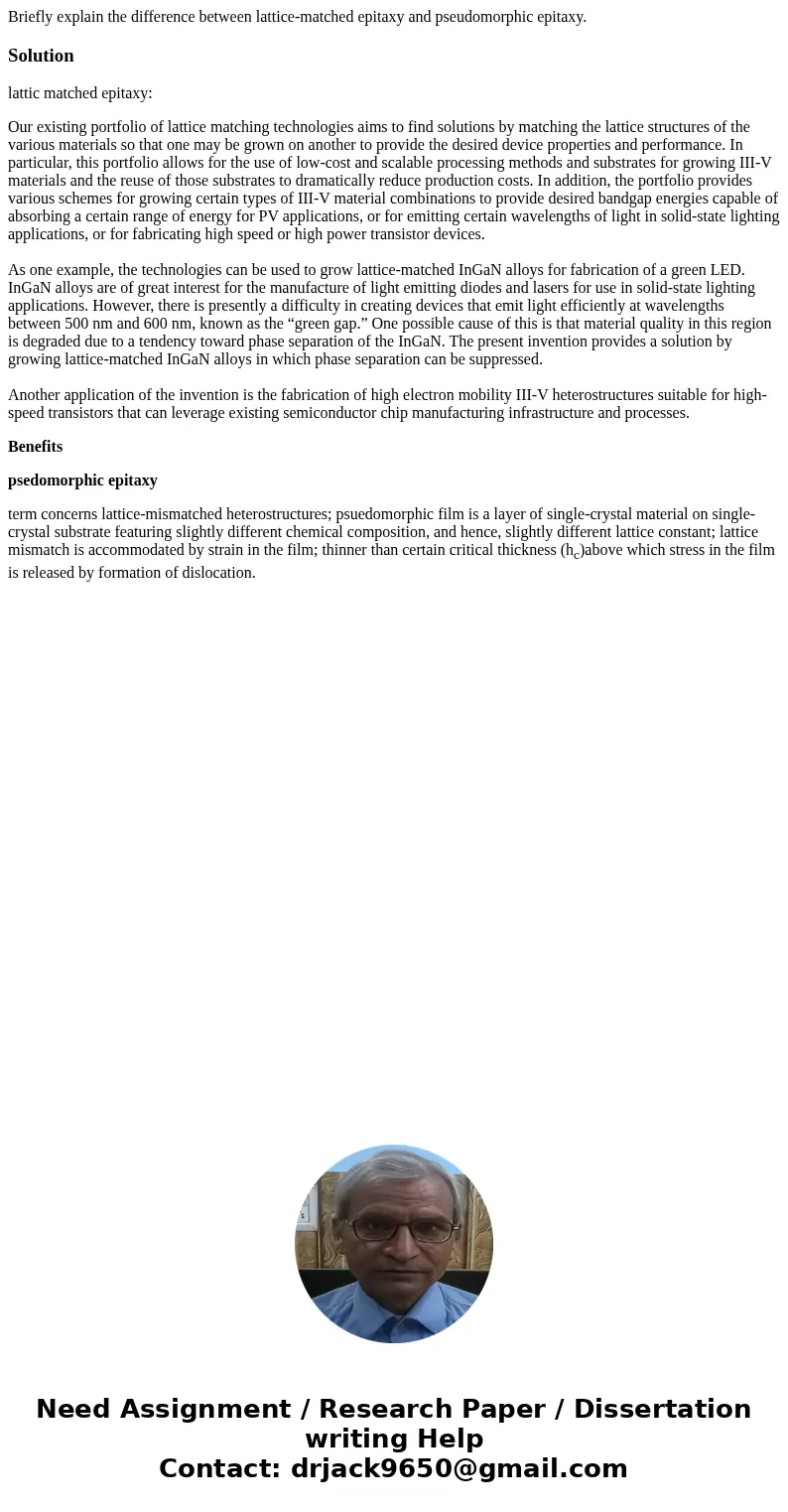Briefly explain the difference between latticematched epitax
Solution
lattic matched epitaxy:
Our existing portfolio of lattice matching technologies aims to find solutions by matching the lattice structures of the various materials so that one may be grown on another to provide the desired device properties and performance. In particular, this portfolio allows for the use of low-cost and scalable processing methods and substrates for growing III-V materials and the reuse of those substrates to dramatically reduce production costs. In addition, the portfolio provides various schemes for growing certain types of III-V material combinations to provide desired bandgap energies capable of absorbing a certain range of energy for PV applications, or for emitting certain wavelengths of light in solid-state lighting applications, or for fabricating high speed or high power transistor devices.
As one example, the technologies can be used to grow lattice-matched InGaN alloys for fabrication of a green LED. InGaN alloys are of great interest for the manufacture of light emitting diodes and lasers for use in solid-state lighting applications. However, there is presently a difficulty in creating devices that emit light efficiently at wavelengths between 500 nm and 600 nm, known as the “green gap.” One possible cause of this is that material quality in this region is degraded due to a tendency toward phase separation of the InGaN. The present invention provides a solution by growing lattice-matched InGaN alloys in which phase separation can be suppressed.
Another application of the invention is the fabrication of high electron mobility III-V heterostructures suitable for high-speed transistors that can leverage existing semiconductor chip manufacturing infrastructure and processes.
Benefits
psedomorphic epitaxy
term concerns lattice-mismatched heterostructures; psuedomorphic film is a layer of single-crystal material on single-crystal substrate featuring slightly different chemical composition, and hence, slightly different lattice constant; lattice mismatch is accommodated by strain in the film; thinner than certain critical thickness (hc)above which stress in the film is released by formation of dislocation.

 Homework Sourse
Homework Sourse